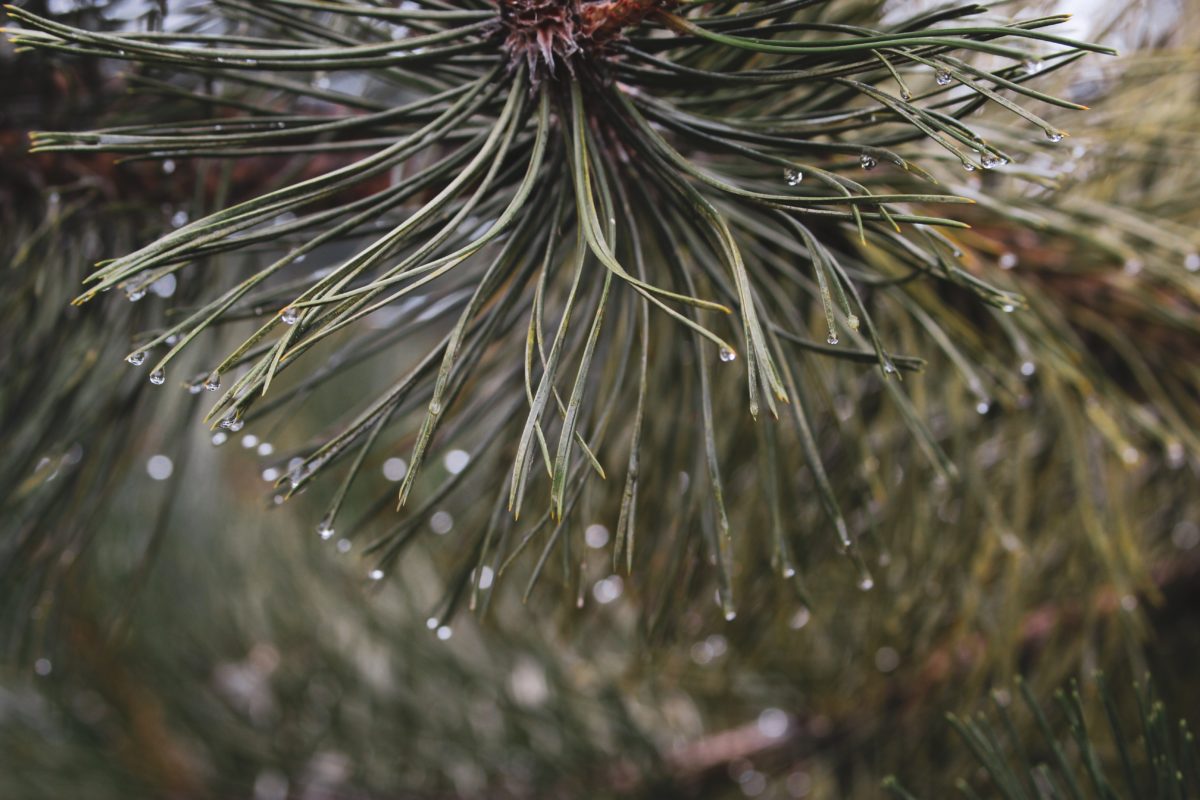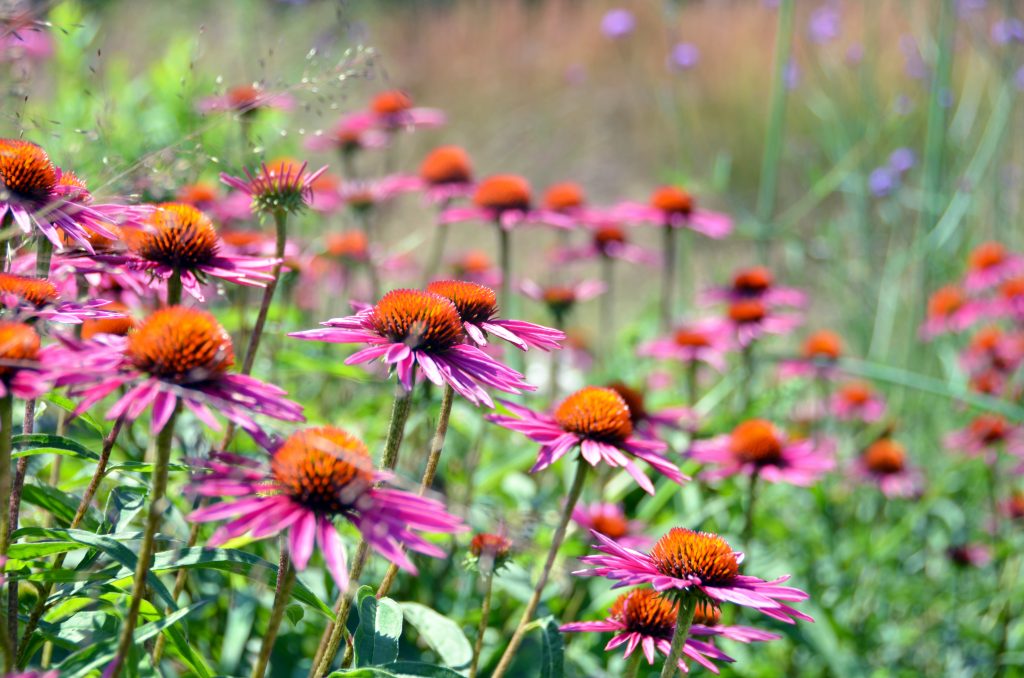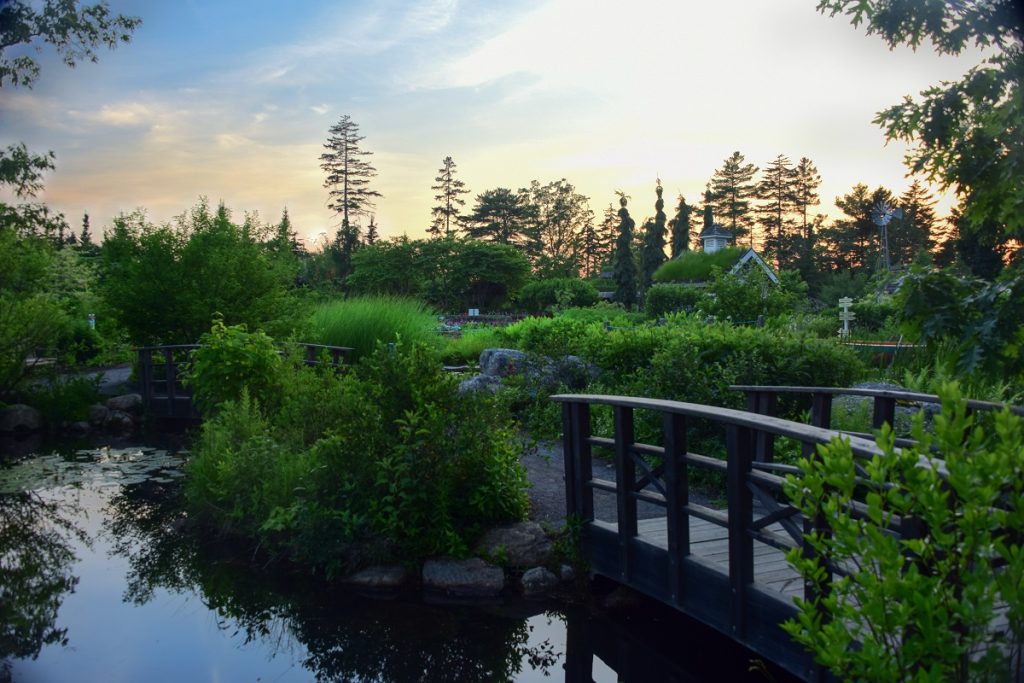“No one can look at a pine tree in winter without knowing that spring will come again in due time.” ~Frank Bolles
When food, warmth, and home are secure, we can enter deep rest and deep tranquility. We can root down, dig in, open space, and breathe. But when life is uncertain, we can still find comfort in the continuing, evergreen life represented by pines. Warming and drying like the best fire, what better time to welcome pine to back hearth than in this particular season?
Pine has been linked with survival for generations. Besides the obvious optimism inspired by its scent and color, traditionally all parts of pine have been used—from sap to bark to needles—as a pain reliever, disinfectant, antiseptic, immune tonic, nutritive, and surprising source of vitamin C. Of course, here in The Pine Tree State, conifers are not hard to find, but since pine species grow all over the country, almost anyone is within walking, hiking, or reasonable driving distance of a pine forest.
Since most of us have a bit of time on our hands these days, how about scheduling a meeting with pine? Choose a clear, dry day if you can; dress warmly and wear good, heavy wool socks. (As my grandfather always said, the amount of time you can spend outdoors is directly related to the warmth of your feet—I’m sure our CMBG horticulturists would resoundingly agree…).
When you come across a pine, look, pause, and begin with sap. You may grumble about its stickiness staining your clothes or hands (tip: work any kind of vegetable oil into the pitch on your skin and it will come right off), but its long been found invaluable, from the cleaner and solvent, turpentine (a product of the distilled volatile oils), to rosin (what’s left behind after distillation) used as glue, sealant, and to increase friction on the bows of stringed instruments.
Here is the poetry of sap—it is the wound-healing mechanism of the tree. My grandfather often melted sap and honey together, blended them, and dropped them by the teaspoonful onto parchment paper, where the drops harden. We used to eat these hard candies after a long, cold hike, and they’re surprisingly delicious. Beneath the sap lies the bark; the soft, inner layer has long been used as an emergency source of sugars and vitamins and was once commonly dried, powdered, and used to extend winter’s flour supplies.
From bark we move on and up to the needles whose greenery signals life—in more ways than one. It’s no accident that evergreen boughs serve as common seasonal décor throughout the darker months. The scent and the color, while invigorating, serve a dual purpose. The volatile oils exhaled by pine boughs in warm, humid rooms are gently antimicrobial and help to refresh a space that may not receive much circulation in the form of open windows, while the color reminds us that life goes on.

Photo by Marta Jastrzebska on Unsplash
Nutritionally, pine needles are high in vitamin C and make a lovely cold-season tea. To make pine needle tea, take a handful of fresh needles from recently pruned branches and chop them roughly. Toss these into a quart-sized mason jar and cover with just-boiled water. Cover and steep for twenty minutes, then strain. Doctored with honey and a bit of peppermint, you have a warming, nutritive tea you can drink all season long. (To make sure you’re working with pine, as opposed to another kind of conifer, look for the number of needles on the branch—if you have bundles of two, three, or five, then you’ve got a pine).
No matter what your energy, your time, or your motivation, a walk through a pine forest is always therapeutic—air, scent, color, space, and time. Even boughs strewn across the mantle, warmed by the hearth, can invigorate and revitalize a room. Let yourself be nourished by the evergreen and know, no matter how dark, how cold it may be, pine reminds us that life persists in all its fragrant wonder. And perhaps, when you return to the Gardens this season, you’ll be newly inspired to discover our own pine forests.
– Amy Holt, CMBG Writer/Editor & master herbalist

